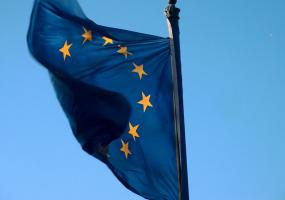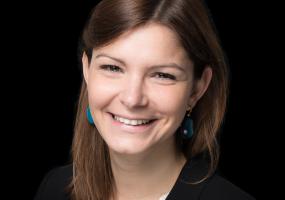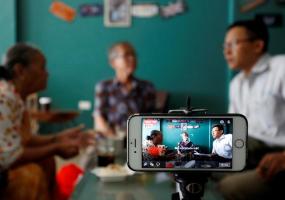Picturing 50 Years of Castro’s Cuba
04 Jul 2011
Jamilah Tangaza writes:
"Venezuela's oil is what is keeping the Cuban economy, but I failed to capture that in my pictures". That was a drawback photo-journalist Robin Laurance had to accept as part of what photojournalists often face in their job of capturing images to tell a story. Robin is working on his latest project - a book which portrays Cuba in pictures, at the end of Fidel Castro's 50 years of rule. According to Robin his aim was to "test whether photojournalists can contribute in a meaningful way, to the task of explaining man to man". Before Robin set off to Cuba to start his photo shoots, he did what he said all photojournalists should do: begin with a sketch. This is essential as the sketch will be the outline of the themes that are to be illustrated with pictures. For his project, Robin’s themes included the economy, social conditions, the relationship between Cuba and Venezuela and between Cuba and the United States, the relationship between church and State, and Soviet influence on Cuba. For him, a good photojournalist is one whose numerous senses are put to work at the same time. The photojournalist "must think, see and feel all at once". Armed with his equipment, sketch and mission to think, see and feel Cuba, Robin arrived in Castro's socialist state with a two-pronged process: to seek out pictures and to look out for pictures. Those, he said, would illustrate his themes. Robin commenced by seeking his 'must have' items. The first was a sugar plantation. According to him finding a sugar plantation was not too difficult, but he had had to painstakingly wait for several before he could get the image he needed to capture. The sugar plantation tells a powerful story of the Cuban economy. In the past Cuba derived almost all its income from the sale of sugar. The Soviet Union was its main trading partner. Today sugar only represents 5% of Cuba's income. Robin’s images of dilapidated industries and farmers using traditional farming methods capture that story of national economic decline. But as Robin found, unlike sugar, tobacco has been able to maintain its allure. His next 'must have' items were pictures of the cigar industry. These would shed more light on the state of the Cuban economy. Cuban cigars are handmade and are very popular around the world. The Cuban government buys 90% of the finished product from local producers. Pictures of lush tobacco farms and cigar makers engaged in their work and crouched in front of not-so-modern tools show an industry that is still very much alive. Cigar workers are paid a £12.50 a month - which is the average wage in Cuba. As a socialist state, press freedom is absent in Cuba. Photos are either not allowed or they are highly restricted in government offices or public buildings. Robin had to devise ways of getting round this challenge. He gave an example of how he used images of children in a government-run crèche to depict the infant mortality rate because he was not allowed to take such photos in the hospitals. Robin did not have problems photographing ordinary people though. They gave him access to their homes with relative ease. That, according to him, was what made him believe that the "idea that people don't like to be photographed is entirely untrue. You just have to be careful." Nevertheless, not all is doom and gloom in Castro’s Cuba according to Robin. Although reliable statistics are very hard to come by, he discovered that the country has an average life expectancy of 76 years. That is as good as the United Kingdom's. He felt that this was probably due to the good medical schools and skilled doctors Cuba has. As he was able to find out, Cuba's medical schools train thousands of doctors including those from overseas. The existing "oil-for-doctors” deal with Venezuela is one example of how Cuba is taking advantage of their expertise in this field. Here, Cuba trains Venezuelan doctors in exchange for oil to help its ailing economy. Since Raul Castro took over the reins of power from his brother, he has made some progress towards reforming Cuba’s economy. He has been moving towards what he refers to as decentralization of government decision-making and revenue flows; giving more autonomy to state-run companies; slashing state payrolls and subsidies and reducing the state's role in agriculture and retail in favour of a growing non-state sector. In practice says Robin, "householders who used to rent rooms can now rent a whole house and people are now allowed to hire staff to work for them." In a country with a population of about 11 million, most of the workers are employed by the government. But Raul has a plan to sack 500,000 workers with the hope that they will be employed by the new private sector he's empowering. So did Robin see Fidel Castro, the main protagonist of the story he's telling? The answer to that was "well, no!" He said he was only able to capture Castro on two occasions: one was as a phrase written on a wall which simply read “Viva Castro”, and the other was a tiny photograph of the Cuban leader which had been pinned up on a notice board, and dwarfed by the imposing picture of Che Guevara hung on the opposite wall. Che Guevara "was everywhere" says Robin. For example, the ministry of interior building had a huge the outline of Che’s face on its outside wall. Having been at the helm of Cuban affairs for half a century, it was somewhat strange that Castro’s pictures were difficult to come by! In concluding his project, the question Robin sought to answer was "what is the future of Cuba?" His answer to that was the photograph of a teenage girl taking a ride on a horse-driven carriage. All dressed up for her 15th birthday, the trip around town was symbolic. According to Robin Laurance, for young Cubans, the ride ahead will certainly be a tough one.





